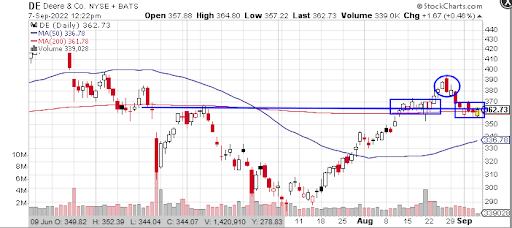Unfortunately, losses are an unavoidable part of options trading. However, our discipline and risk management will hopefully minimize our losses. A disciplined approach to risk management is…
the most important (and perhaps difficult) things you can learn.
Taking and dealing with losses is not the fun or glamorous part of the job, but learning proper risk management is crucial for long-term success. A big part of this is removing ego, admitting we were wrong, and cutting losers early.
So, while I don’t want to be a Negative Nancy, especially as Options360 experiences to a 21% year-to-date gain while SPY is down 15% YTD, I think it’s important to show the process of how, why, and when I take a loss.
And since every trade is independent of the one (winner or loser) that came before it, I take note of what I did wrong to learn from my mistake, and I never look back.
Become a member of the Options360 community for just $19 one-month trial
The best way to show you what I’m talking about, and give a peek at what you receive as a member of Options360, is to show an example of a trade alert.
Here is an alert I sent last week on September 7: (Don’t put this trade on now…)
Deere (DE) makes farm equipment.
Not sure what the state of that industry is – relatively strong commodity prices accompanied by higher costs and uncertainty over supply/demand dynamic.
Also, a strong dollar makes DE, which makes 35% of sales overseas, susceptible to currency impact.
But this bear trade mainly rest on the chart.
I’m not a big ‘head & shoulders’ guy, but if the formation is gonna work, this is a good set up.
The key to believing in the H&S is having the right shoulder break the left shoulder… which should lead to lower prices.
DE carries a high ticket price making any trade at the threshold of my comfort level in terms of asset allocation.
But, we will manage this tightly; initial stop loss is a move above $388.
The trade recommendation is a form of risk/reversal, buy a diagonal put spread and a credit Sep. call spread.
Note the different expiration dates being used.
ACTION:
- Buy to open 1 contract Nov (11/18) 360 Put
- Sell to open 1 contract Sep (9/16) 355 Put
- Sell to open 1 contract Sep (9/23) 395 Call
- Buy to open 1 contract Sep (9/23) 405 Call
For a Net Debit of $14 (+/-0.20)
Seemed like a great setup, and as you can see, I took an aggressive approach, using a combo of bearish put spread with a bearish call a spread.
In fact, the $1,400 net debit understates the risk; the credit call call spread makes the max risk close to $2,200. That is four times the typical $300–$600 I allocate to most Options360 trades.
I loved the setup and put my money where my mouth was.
However…
Continue reading at WEALTHPOP.com



